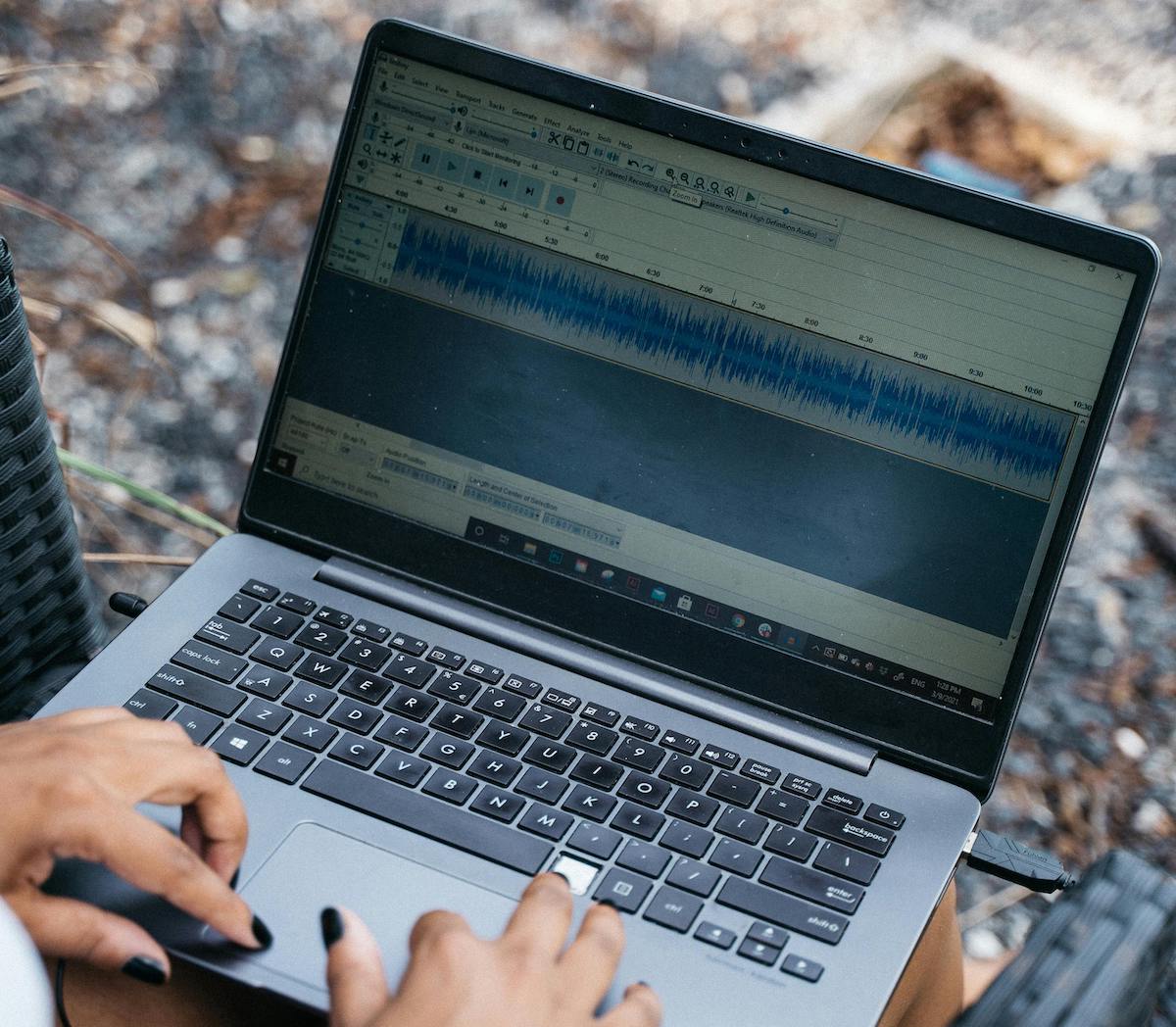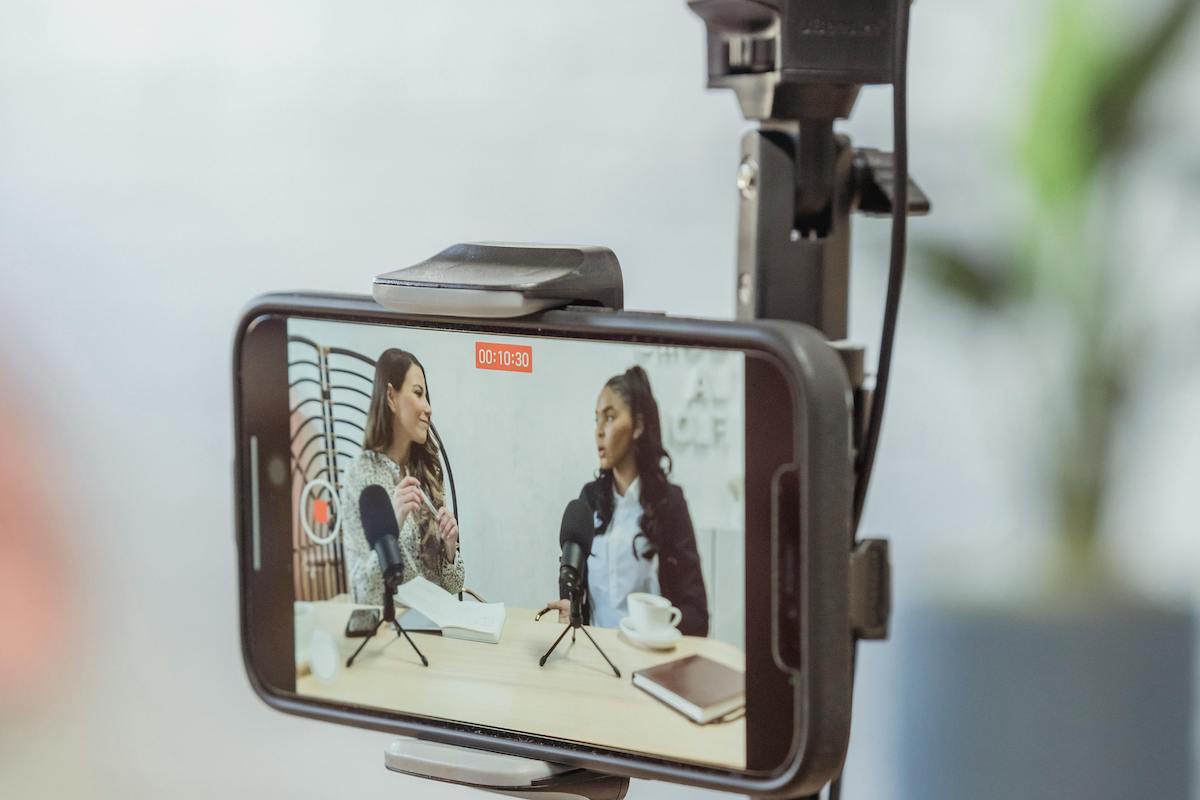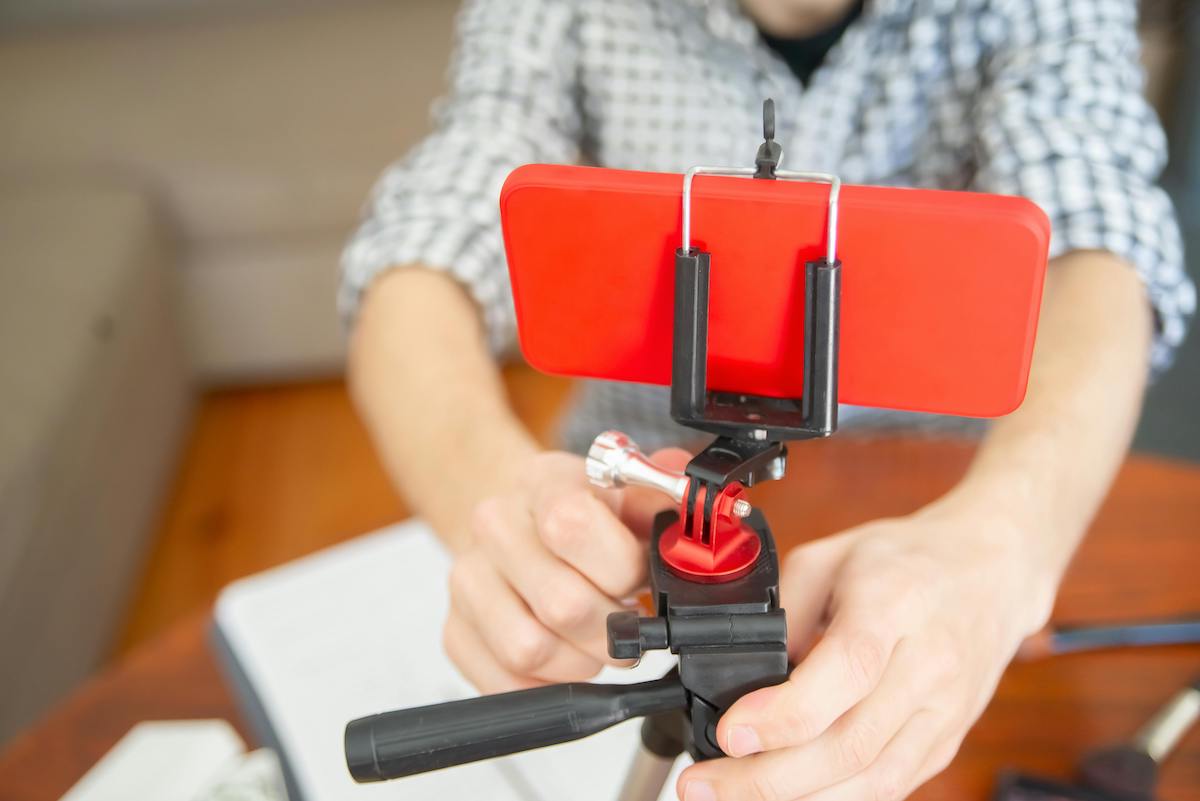Did you know you can start a podcast for free? That’s right! You don’t need fancy equipment, a professional studio, or a big budget to dive in. You can kick off a high-quality podcast with the right tools and a few helpful strategies without spending a single penny.
In this guide, we will walk you through 15 easy steps to start your podcast journey for free. From picking your topic to recording, editing, and publishing, we’ll cover everything you need to get your show up and running.
If you’ve hesitated to start podcasting because of the costs, consider this your nudge to jump in—let’s embark on this adventure together!
What You Need To Start A Podcast For Free
Have you been curious about how much does it cost to start a podcast? The answer is that you can actually launch a podcast without spending a dime—if you already have some basic equipment at your disposal, like a smartphone or laptop. While there are various budget options out there, we’re focusing on how you can get started for free.
An Idea
Every podcast starts with a concept. Your idea is the foundation of your show. Think about what topics you’re passionate about and how you can provide unique value to your listeners. Whether it’s storytelling, expert interviews, or a deep dive into a niche subject, your idea will guide everything from your content to your presentation style.
Spend time researching and developing your idea. Work out what podcast format you want to record and plan your setup accordingly.
Something To Record With
Recording doesn’t require expensive equipment—your smartphone or laptop is a great starting point. Most modern devices come with built-in microphones that are perfectly adequate for beginners. The key is to find a quiet space where you can record clear audio.
As you grow and refine your podcast, you might consider upgrading your recording gear and spending money on one of the best microphones for podcasting. But initially, your existing device is more than enough!
Editing Software
After recording your episodes, you’ll need to polish them up through editing. Podcast editing can be tricky for complete beginners, but take your time and follow relevant online tutorials to learn the ropes.
There is actually some really great free podcast editing software available. Your best options are either Audacity or GarageBand. Both are entry-level DAWs (Digital Audio Workstations) that can help you trim, adjust, and enhance your audio without any cost. Editing not only removes mistakes and background noise but also gives your podcast a professional touch.
Learning how to edit a podcast like a pro takes time. Be patient and learn from each podcast episode!

Extra Tools
In addition to your recording and editing tools, consider using free software to help with other podcast-related tasks. For example:
-
Graphic Design Tools: Use Canva or Adobe Express to create eye-catching podcast cover art and social media promotions.
-
Planning and Organization Apps: Tools like Trello or Google Docs can help you organize your episode outlines, research, and show notes. Staying on top of the workload is a top tip for podcasting success!
Hosting
Finally, you need a place to store your podcast files and distribute them to your listeners. Free hosting platforms do exist! Here are some free podcast hosting providers you can explore to start your successful podcast:
|
Provider
|
Price
|
Storage
|
Bandwidth
|
|
Podbean
|
Free
|
5 Hours total
|
100GB / month
|
|
Buzzsprout
|
Free
|
Limited to 2 hours each month
|
250GB / month
|
|
Saspod
|
£9 / month
(Use this code to get 6 months free!)
Use Coupon - BLOGREADER
|
Unlimited
|
Unlimited
|
Podcast hosting is a specialized service that stores and delivers your episodes to major podcast directories such as Spotify, Apple Podcasts, and YouTube Podcasts. With these platforms, you can focus on creating great content without worrying about the technicalities of distribution.
15 Steps To Start A Podcast For Free
Are you ready to start your podcast for free? With some planning and the right free tools, you can launch a quality show without spending a dime! Here are 15 essential steps to get you started for free.
Step 1: Choose Your Podcast Topic & Niche
If you want to know how to start a podcast for free, the first step is choosing your topic and niche. Begin by selecting a subject that you’re passionate about. This will keep you motivated and attract listeners who share your interests.
Once you’ve picked a topic, narrow your focus by defining your target audience. Ask yourself the following questions:
Make sure you spend time here working out your podcast concept. The more time you spend planning, the less time you spend tidying up loose ends along the podcasting journey!

Step 2: Choose a Podcast Name
Your podcast name is a key part of your brand and podcast identity. Choose a name that is clear, relevant, and easy to remember. You could use your name or the podcast's niche. Look at other podcasts and see what connects to you. Here are some good examples from our clients and podcasts we work on:
Before finalizing, check for name availability on social media platforms, domain registrations, and even among existing podcasts. This will help ensure your show stands out and avoid potential trademark issues.
Step 3: Decide on a Podcast Format
What kind of podcast do you want to create? Think about the format that best suits your content and personality. Do you want to host solo episodes, have a co-host, conduct interviews, or even feature panel discussions?
Ideally, you should decide this before you record your first podcast episode. Once you are established and have a loyal podcast audience, you could experiment with the format and try new things.
Additionally, logistics like episode length and release frequency should be considered. A clear format sets the stage for a consistent and engaging listener experience.
Step 4: Plan Your First Episodes
Before you hit the record button, outline your initial content. Brainstorm ideas and create a rough outline for at least three to five episodes. Planning early helps maintain a cohesive narrative and ensures a steady stream of content is ready to go once you launch.
We highly recommend working towards a backlog of episodes. Stay ahead of your recording schedule so you are never pressured to rush to meet the deadline. Fast turnaround podcast editing is a job best left to the professionals!
Step 5: Find Free Recording Software
Top-quality audio sets amateur and professional podcasts apart. Use free recording software, like Audacity or GarageBand. If you plan to do remote interviews, platforms like Zoom offer free tiers that allow you to capture your conversations easily.
You can use this podcast software with your own free-to-use audio recording hardware (e.g., your laptop microphone.) This will be enough to get you started. However, at some point, you will want to upgrade to a good podcast mic.
Step 6: Get a Free Recording Setup
You don’t need expensive microphones to get started—your smartphone or laptop’s built-in mic can do the job. To enhance your recording quality, use free noise-reducing apps and record in a quiet environment. This simple setup often produces clear and engaging audio that is good enough for your own podcast production.
Creating a dedicated recording space will be worth the effort. If you can source acoustic treatment panels, close windows to busy streets, and turn off your phone notifications, you'll be off to a good start!

Step 7: Learn Basic Editing Techniques
Editing is the process of polishing your raw recordings into a professional-sounding episode. Use free software to remove mistakes, unwanted background noise, and awkward pauses from your audio files. Many podcast editing software programs provide simple tutorials to help you understand the basics.
Here are some suggestions to get you started:
You can also find free podcast music online. Add royalty-free intro and outro music to give your podcast a more refined and consistent feel. Listeners will get to know your podcast intro, providing a comfortable listening experience. Uppbeat is an excellent resource for free royalty music to complement your podcast.
Step 8: Create A Free Podcast Cover Art
Your cover art serves as the visual representation of your show. Designing podcast artwork is an essential step in launching a podcast for free. Utilise free tools such as Canva or Adobe Express to create eye-catching artwork. A successful show cover makes a visual impact and instantly attracts listeners with simplicity and clarity. This artwork is essential.
Podcast artwork requirements:
To keep your visuals sharp and inviting, avoid using blurry images or explicit language, and use only your own logos. It’s best to include just your show name and its key art. If you do need to add a logo, try to limit it to one. Also, avoid placing important artwork elements at the bottom fifth of your image; they might get hidden by play progress bars, labels, or subscription offers.
A compelling cover image can significantly increase your chances of attracting potential listeners.
Step 9: Write an Engaging Podcast Description
Writing a compelling podcast description is another key step in starting a podcast for free. This is the hook that will succinctly capture the essence of your show and draw listeners in. The podcast description has two key functions:
-
Explain what topics you’ll cover and why listeners should tune in.
-
Incorporate relevant keywords to improve discoverability on podcast directories and search engines. This is SEO.
A well-written description is essential for attracting your target audience and building your podcast. In addition to the overall description, you can craft individual show notes to complement your episodes.
Some podcasters even write a blog post to accompany each release. This is a great way to boost your discoverability and offer free resources to your audience. You could also create a podcast website to keep everything together and keep your podcast adventure neat!
Step 10: Choose a Free Podcast Hosting Platform
A reliable podcast hosting service is crucial for storing and distributing your episodes to major directories. Podbean and Buzzsprout are popular options with free tiers that simplify the hosting and distribution process.
Alternatively, you could spend a little money here and get a podcast hosting platform with unlimited storage and bandwidth. This is highly advisable if you plan to release both audio and video podcast episodes.
Step 11: Submit Your Podcast to Directories
Once your podcast is hosted, it’s time to share it with the world. Submit your RSS feed to popular directories such as Spotify, Apple Podcasts, and YouTube Podcasts. Many free hosting services include built-in distribution tools, streamlining the process and ensuring your podcast reaches a wide audience.
Plenty of free resources are available to help you navigate this step of starting your own podcast.
Step 12: Promote Your Podcast for Free
Promotion is key to growing your listenership. Leverage social media platforms like Instagram, TikTok, X, and Facebook groups to share your episodes and engage with potential listeners. Additionally, participate in online communities (like Reddit and Discord) related to your niche. These channels offer powerful, cost-free ways to boost your podcast’s visibility.
If you have editing skills, create snippets of your episodes to share on social media as teasers. Short clips are a great way to give listeners an idea of what your show is about while promoting future episodes.

Step 13: Collaborate & Cross-Promote
Networking can open doors to new listeners. Reach out to other podcasters for guest appearances or collaborative episodes. Engage in cross-promotion by sharing each other’s content on social media, in relevant Facebook groups, LinkedIn, and podcasting forums. Collaborations help build community and expand your reach.
Step 14: Ask for Listener Engagement
Encourage your audience to become active participants in your podcast. Ask them to leave reviews, share episodes, and provide feedback. Consider starting a free email newsletter using platforms like Substack or Mailchimp to keep your listeners informed about new episodes, behind-the-scenes content, or upcoming topics.
Listener engagement builds community and improves your content based on real feedback. Listening to your audience is a key step in making a podcast successful.
Step 15: Stay Consistent & Keep Improving
Finally, consistency is key. Stick to a regular schedule so your audience knows when to expect new episodes. Be open to experimenting with new ideas and formats, and use listener feedback to refine your podcast continually.
Minor improvements can, over time, lead to a significantly more polished and engaging show. When you are ready to invest in your show, consider upgrading your podcast equipment and recording process. You could even work with a podcast editing professional to give your episodes that extra polish!
Now You Know How To Start A Podcast For Free!
Starting a podcast for free is possible and rewarding. It empowers you to share your unique voice with the world. To launch a quality podcast without breaking the bank, follow these 15 straightforward steps, from choosing a captivating topic to consistently improving your episodes.
Remember, passion, planning, and persistence are the keys to success. With just a smartphone or laptop, a bit of creativity, and the right free tools, you’re fully equipped to dive into the world of podcasting. Embrace the process, experiment with your content, and let your enthusiasm shine through every episode.
Now that you have the roadmap, it's time to act. Brainstorm your ideas, set up your recording space, and bring your podcast vision to life. Happy podcasting!


Comments
No comments yet!